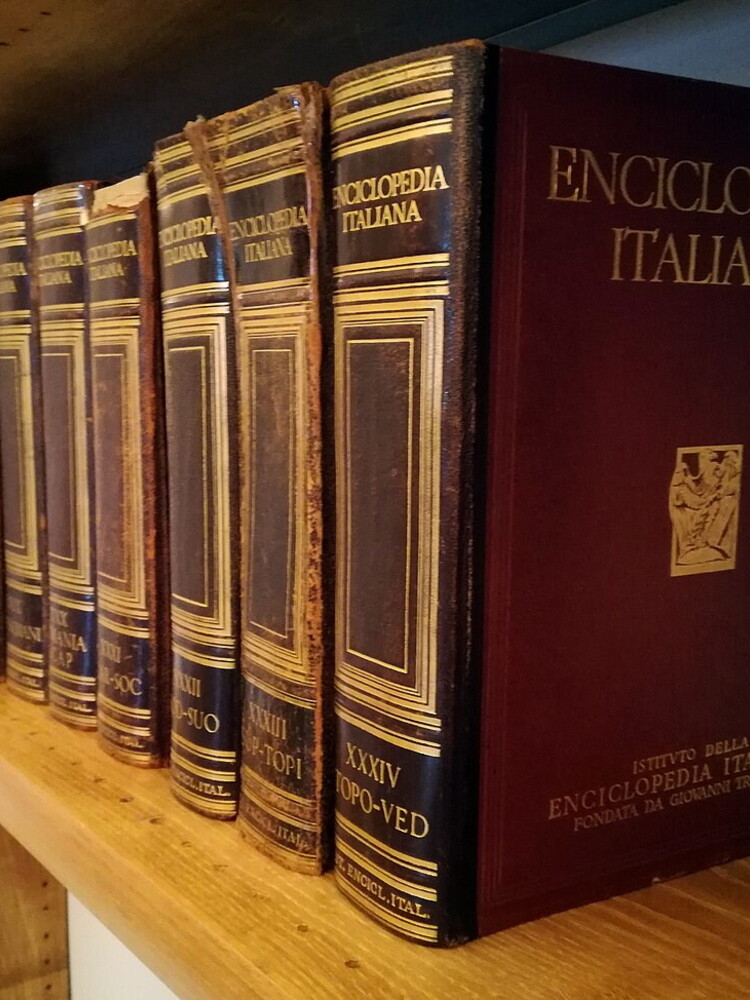On February 18, 1925 with the foundation of the Giovanni Treccani Institute in Rome the foundations for the monumental work dedicated to science, arts and culture were laid
The deed of foundation of the Giovanni Treccani Institute, on February 18, 1925, was the first stone of the construction of theItalian Encyclopedia of Sciences, Letters and Arts, known as the Italian encyclopedia or simply Treccani. One hundred years ago the premises were placed for the birth of the colossal work that was to be constituted the monument to Italian culture. The delay compared to other European experiences derived from the delay with which the process of unification of the peninsula had been completed and on the characteristic of the coexistence of local dialects rooted and with its own linguistic structure, inheritance of the history of Italian states and foreign dominations. Dante’s Italian, already identified as national idiom, had yet to be consecrated as a common heritage. The great mass mobilization for the war 1915-1918 had revealed a widespread illiteracy of popular masses and linguistic knowledge limited to the local speech. The Italian was therefore the language of the cultured classes, and it was even recently introduced in the court of the Savoy, which was notoriously expressed in French or in Piedmontese. Consider, by way of comparison with a multi-cultural national state, that the Encyclopédie, or reasoned dictionary of the sciences, arts and crafts, of Denis Diderot and Jean-Baptiste Le Rond d’Alembert, sees the light in 1751 taking the moved by the original idea of translating the Cyclopaedia, or universal dictionary of the arts and sciences of the English Ephraim Chambers, from 1728.
A patron, kind as director and prominent personalities
In the first post -war period, in 1921, he had been constituted as a moral body theInstitute for the propaganda of Italian culturewhich later became the Leonardo Foundation for Italian culture, which would have liked to publish the first great Italian encyclopedia in 18 volumes. Three years later, to unlock the demanding company, the successful entrepreneur in the textile branch and patron of the arts Giovanni Treccani (1877-1961) was involved in the project, which was enthusiastic about it. A few years earlier he had carried out a huge donation to the Accademia dei Lincei and had purchased the Borso d’Este Bible for a hyperbolic figure, in order to prevent it from ending up in France. He was senator of the Kingdom since 1924 and immediately collected the invitation. And so in Rome the Institute was founded that brought its name, in order to organize the immense amount of work, study and compilation. Among the founders, and the first scientific director, there was the philosopher Giovanni Gentileformer minister of education. Among the other personalities involved, the Marshal of Italy Luigi Cadorna and the Admiral Paolo Thaon de Revel, the historiographers Gaetano De Sanctis and Francesco Salata, the economists Luigi Einaudi and Angelo Sraffa, the painter Vittorio Grassi, the doctor Ettore branded, the Jurist Silvio Longhi, the journalist Ugo Ojetti, the president of the Senate Tommaso Tittoni. To lead the editorial staff, the philosopher Antonino Pagliaro.
The pitfalls of the regime and the mirror of the times
If it is true that many of the collaborators immediately called to give birth to the project will join April 21, 1925 to the manifesto of fascist intellectuals, it is also true that the encyclopedia managed to involve over 3,200 high -level Italian intellectuals and recognized profile, of any political orientation , also Jews and even declared anti -fascists. As far as possible, the interference of the regime were limited or kept outside. Of course, being the daughter of the times, the encyclopedia could not be immune to contamination or infiltrations. The “fascism” voice, for example, was said to have been developed by Benito Mussolini himself, but seems much more truthful that he wrote it the same Gentile who wanted the work as the sum of Italian culture in all its forms.
Three years of work to see the first of 35 volumes
Three years were needed to coordinate the operation of 48 study sections and mark the over sixty thousand voices that would constitute the body of the first edition. The first of the 35 volumes (from A-Agri to Veg-Zyg, each of which of a thousand pages of average) will appear in 1929 and the last one, together with the name of the names, in 1937. The overall result of the encyclopedia Italian will soon make one of the most valuable and important editorial products of the twentieth century, and certainly the main on a national scale. The great success must not have as reference the audience of readers, since it was an expensive, prestigious and elite work, which however found its most popular dimension thanks to the various libraries that made it available to students, researchers And of anyone who wished to sit but could not afford to have a Treccani on the shelves of the home library.
Towards modernity and spread on the streets of the web
After the Second World War, the appendices will be published in irregular temporal scans, and as happened for consumer goods in the economic boom, the installment purchase was launched, to flood as much as possible the users of a far from economic work, whose amount of which Final was diluted in small monthly odds. At the end of the first decade of the 21st century, Treccani also showed up with the times, proposing the technological innovation of the DVD that simplified the consultation procedures by considerably shortening the times. But even earlier, at the end of the millennium, thanks to the creation of the Treccani website, the online consultation had become possible. Hundred million per year of access has been overcome for the first time in 2014. For one hundred years human knowledge has lived in Dante’s language, perpetuating and innovating from the paper pages to pixels on the screens of computers, tablets and smartphones.
